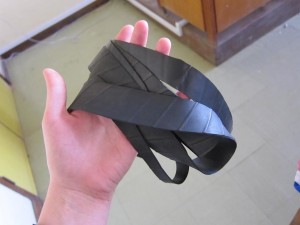Prototyping in Blantyre is a whole different ballgame from prototyping in Houston. At Rice, where we have the OEDK, every material you could need is available for you to use; at worst, it’s a simple click away from Amazon. If you need a box of certain dimensions, both the 3D printer and the laser cutter are conveniently at your disposal; to construct said box, screws, nails, washers, and bolts of every size are at the ready; dozens of various glues are in a cabinet nearby in case nails and screws aren’t working out. The abundance of materials at the ready encourages a creativity grown from the absence of limits; almost any practical thing you could want to build can be from the ground up with the resources around.
Blantyre doesn’t offer that same opportunity. Instead, it fosters a different sort of creativity, one born from the absence of materials as opposed to a limitless supply. You’re limited by what you can find in the immediately surrounding area. If you have an idea, one of the first considerations has to be practical execution; the assumption that any idea can somehow materialize (which is prevalent in the US) doesn’t exist here. Catherine wrote a blog a little bit ago about this idea, called “Little Epiphanies,” which I would recommend!
The divergent effects that these two environments have on students has been quite apparent, if you consider this group of seven inters as somewhat of a case study. The four Malawian interns are far more skilled at reconsidering materials, at seeing existing objects as potential resources to be deconstructed and used for an entirely different purpose. As I said, the lack of resources cultivates a creative ability to use alternative materials in order to continue creating. It’s a more efficient use of existing resources that fosters a mental flexibility I think is crucial to successful design. Of course, the lack of materials creates challenges and in some ways slows progress, but it also improves an ability to problem solve, think innovatively, and work within your design constraints. Here are some recent examples of making do with what’s available:
- Phototherapy dosing meter box. This was a simple fix, but still a good example of what I’m talking about. We wanted a plastic box that was handheld, long, and thin to increase accuracy and usability of our phototherapy dosing meter. Unfortunately, we only had a box that was too big and one that was too small. At Rice, we would have laser cut the perfectly sized box; here, if we had no resources, we would have built a wooden box from scratch. To save time and resources, the existing too-large plastic box was sawed down in a way that maintained all of the smooth plastic edges and screw holes, but gave us the dimensions we wanted. The super glue seam was then coated in the black dust that had fallen from the plastic during sawing, and sanded down to blend in with the adjusted box.
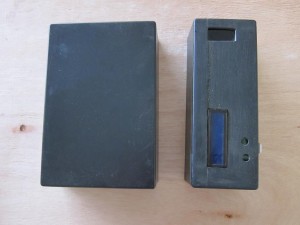
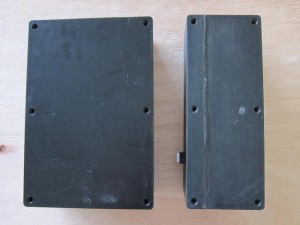
- Cardboard box power supply. We ran through all of the 9V batteries we brought from the US to power our Arduino during testing. There aren’t any power supplies in the room we work in, but we needed an adjustable 5V – 9V power supply in order to build and test our circuits. Andrew brought in a small power supply that he had built himself a few weeks ago, fashioned out of an old Dell cardboard box. The little device works perfectly to run tests with, is really low cost, and he didn’t even have to leave the school to build it.
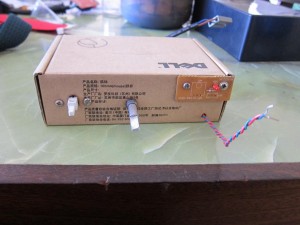
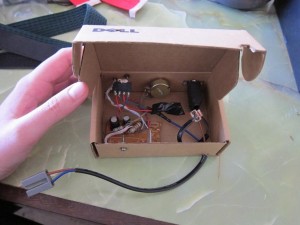
- IR LEDs and receivers. Our design for the suction pump device relies on infrared light transmission and reception. While these components are available and low cost in the US, they can’t be found and bought in Blantyre. The Malawian interns, though, realized this is the same mechanism many home appliances (remotes, in particular) use to function. So, they deconstructed devices that Andrew and Christina brought from home, cut out the infrared LED and corresponding transceiver, and used these components to build our suction pump accessory device.
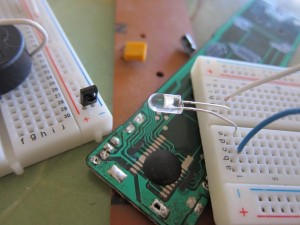
- Elastic material. One iteration of our suction pump accessory housing involved an elastic band. We needed elastic that wouldn’t wear much with time, but squeezed the suction bottle tightly. We found the perfect material in a discarded piece of scrap rubber used for automobiles. Again, the solution was low cost, a bit unexpected, but solved our problem perfectly.
